FALLINGWATER FAST FACTS
LOCATION: Mill Run, Pennsylvania
HOURS: 8 am – 4 pm from March 5 thru December 31
COST: $32 per person – Guided architectural tour (other options available)
TIME TO COMPLETE: 2-3 hours
ACCOMODATIONS: Parking lot, public restrooms, Visitor Center and Gift Shop
When one is considered the greatest at their craft there always seems to be one particular creation that stands above the others. Michangelo’s David, Da Vinci’s Mona Lisa, Picasso’s Guernica . . . For Frank Lloyd Wright, America’s greatest architect, that creation was Fallingwater. Tucked away in the Laurel Highland woods of southwest Pennsylvania, about 70 miles (110 km) southeast of Pittsburgh, Fallingwater is the ultimate example of organic architecture, the discipline’s seamless blending of both man and nature. Conceived in 1936 and completed two years later, Fallingwater was commissioned as the summer home of Pittsburgh magnate Edgar Kaufman and his family.
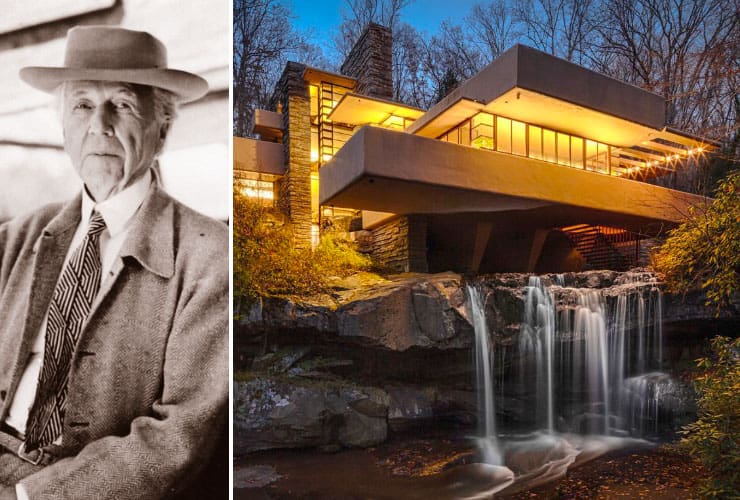
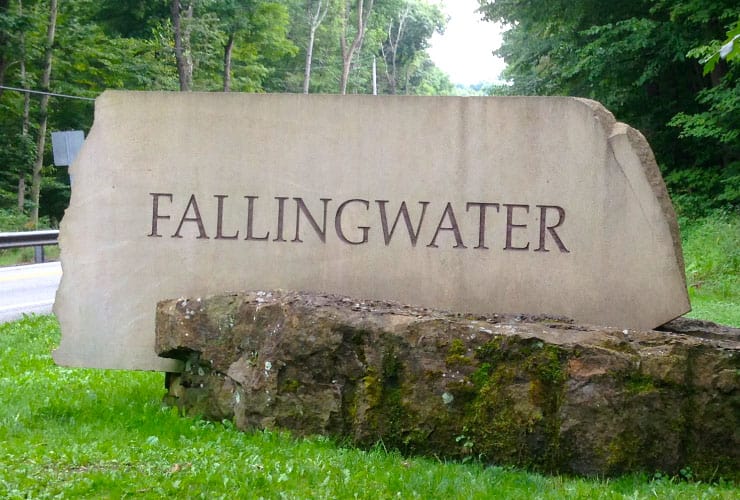
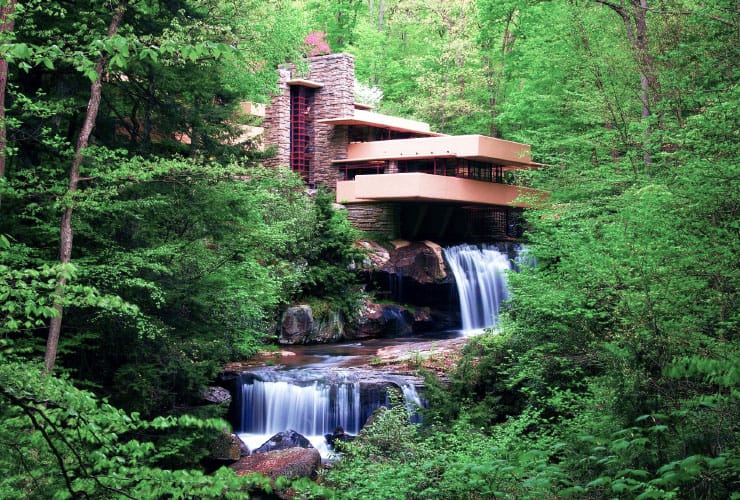
Wright was a controversial genius whose talent was exceeded only by his ego and arrogance. Despite a brilliant career he had fallen out of favor when Kaufman presented him the opportunity to create what the “American Institute of Architects” later named the best all-time work of American architecture. Fallingwater, along with the infamous Johnson Wax Building allowed Wright, at the tender age of 67, to become prominent again in the architectural world.
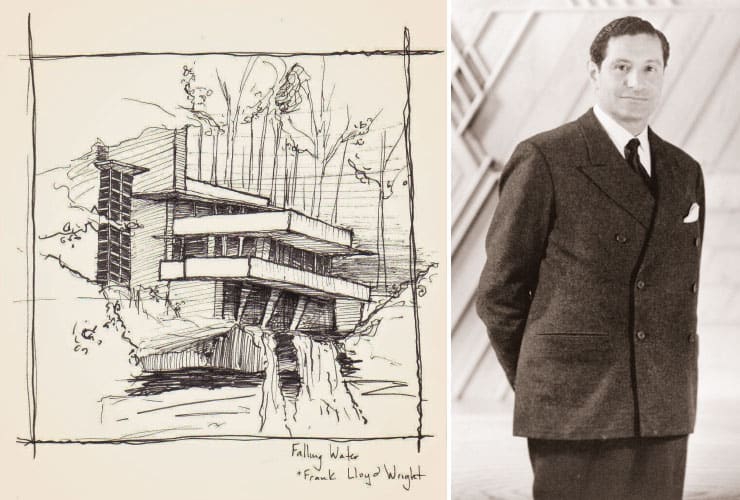
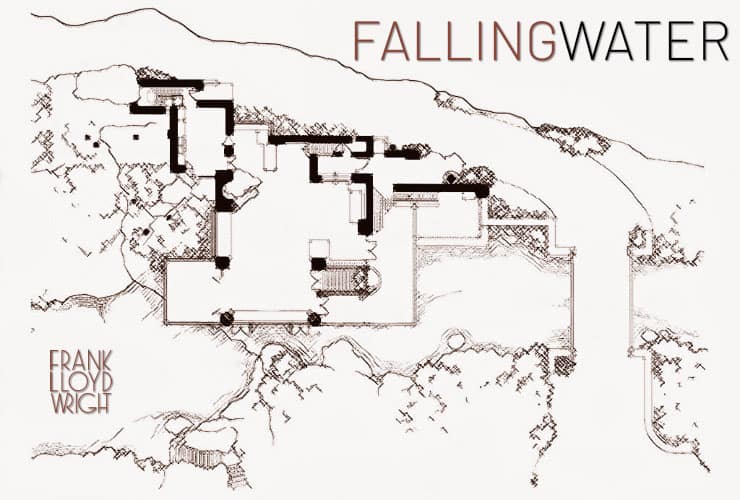

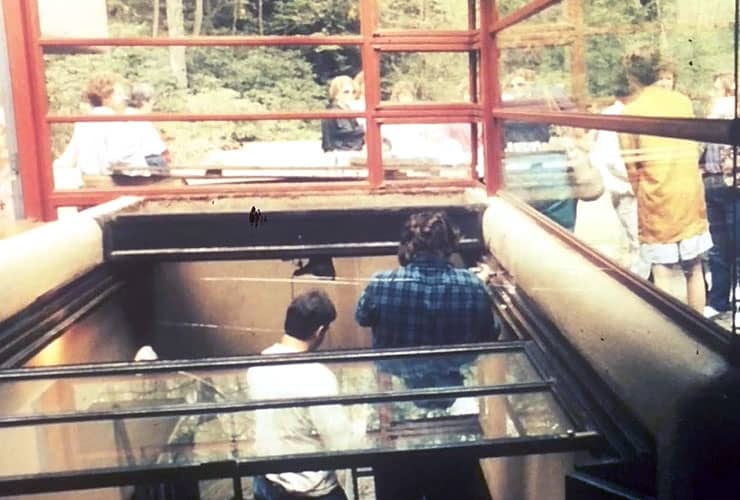
There were many problems in the building of the home from disagreements between Kaufman and Wright including where to place the home relative to the falls, the risky use of concrete in constructing the cantilevers (the unsupported balconies and decks) and the fact that Wright, on an estimate of $35,000, went over budget to the tune of $155,000! Adjusting for inflation, the total cost of Fallingwater today would be close to $3 million. That was nothing compared to the adjusted $16.8 million required to complete the 2001 restoration. For any lover of art and/or architecture, it has been money well spent.
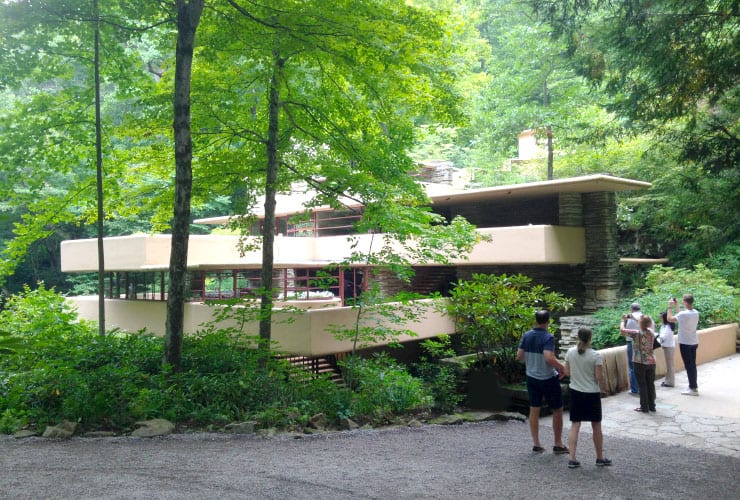

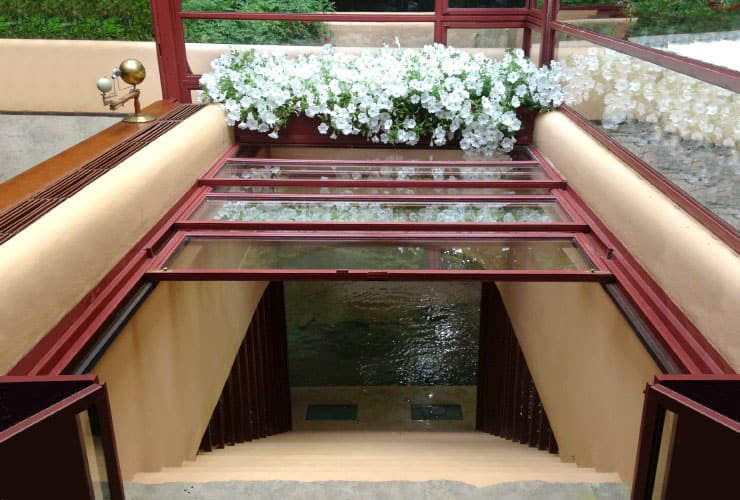
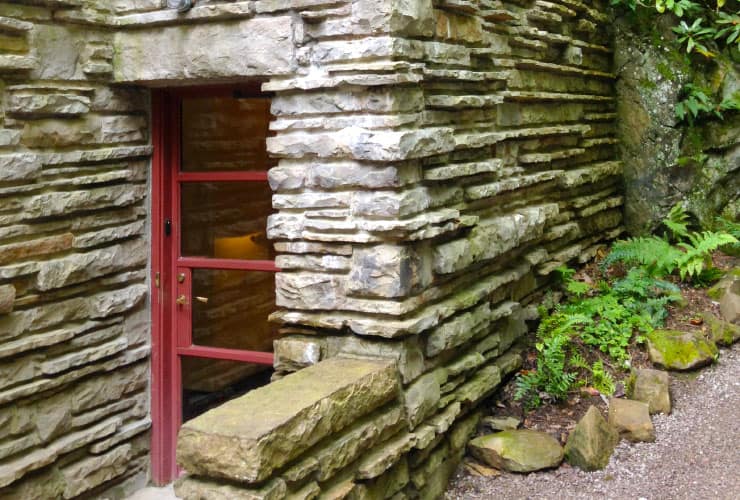
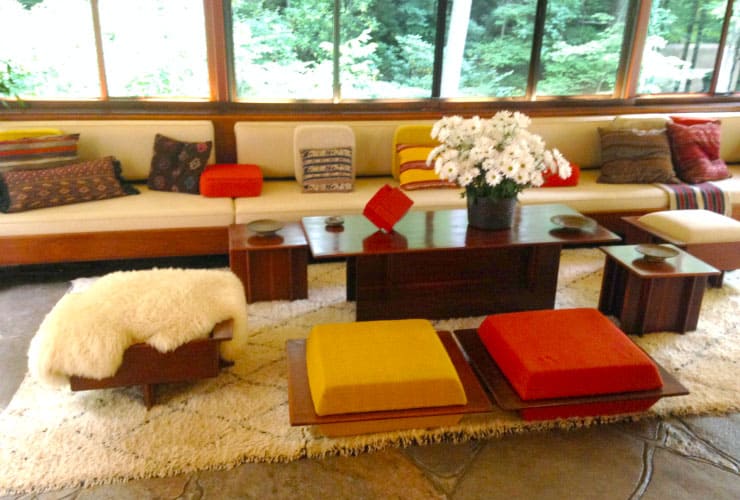
What really sets Fallingwater apart from other structures were Wright’s ingenious integration of the physical structure without disrupting its natural environment. As you first cross the bridge and see the home you are struck by how comfortable Fallingwater fits into the surrounding forest. The Bear Run stream that feeds the waterfall runs right underneath the home and can, in fact, be accessed from a hatch in the living room that leads to stairs directly down to the stream. The stones used for many of the walls came from a nearby quarry so they blend naturally with the other stones on the property. Even the colors chosen for the interior and exterior match those of the Laurel Highland woods.
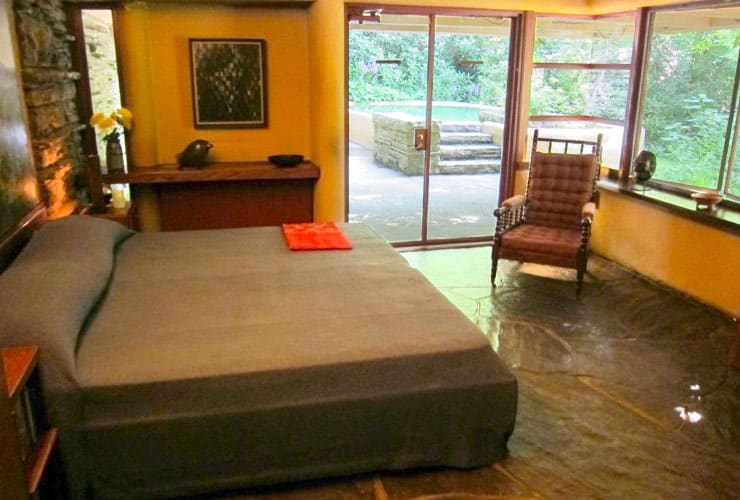
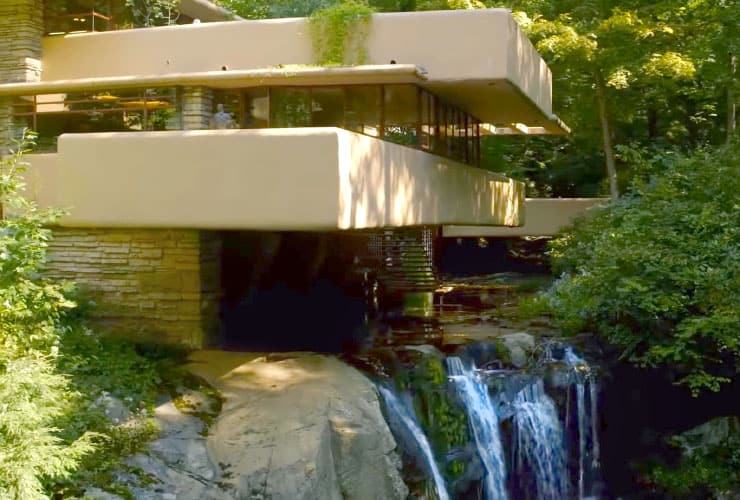
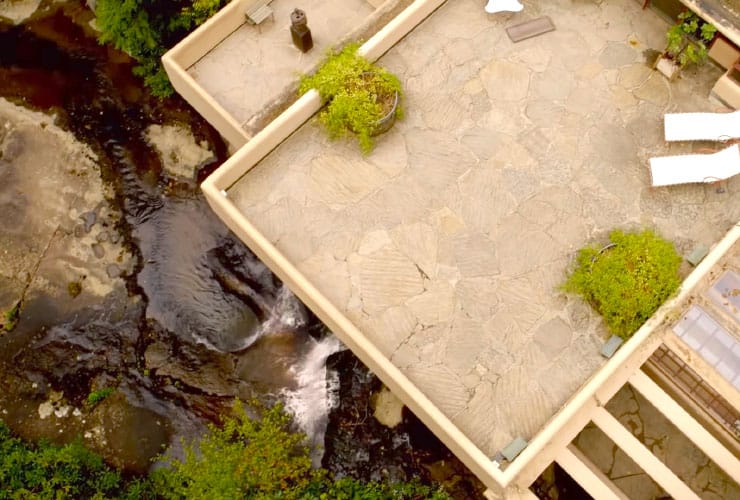
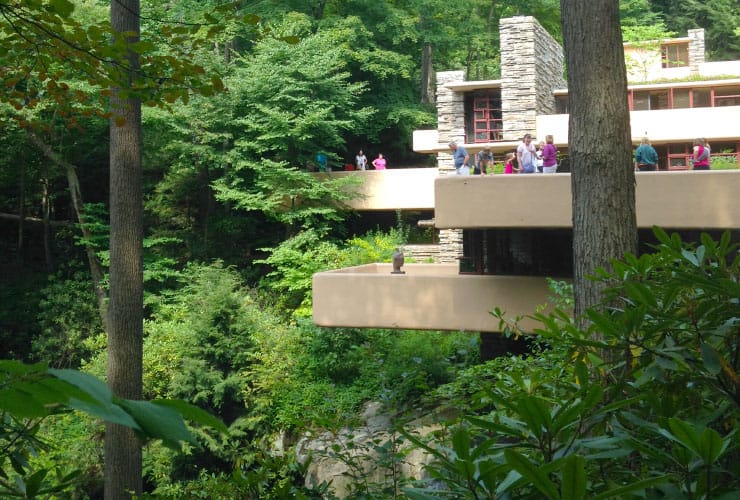
Wright so loved the location of Fallingwater he deliberately made the bedrooms small, complete with low ceilings, to encourage visitors to move outside onto the many open verandas. The cantilevered terraces of local sandstone are seamlessly integrated into the surrounding rock formations giving the illusion of floating above Bear Run and the falls. Wright stated that he wanted the Kaufman’s, and their visitors “to live with the waterfall…as an integral part of [their] lives.”
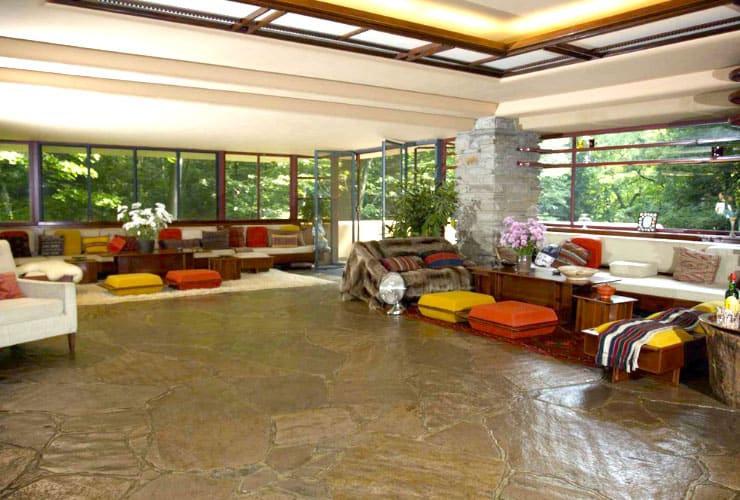
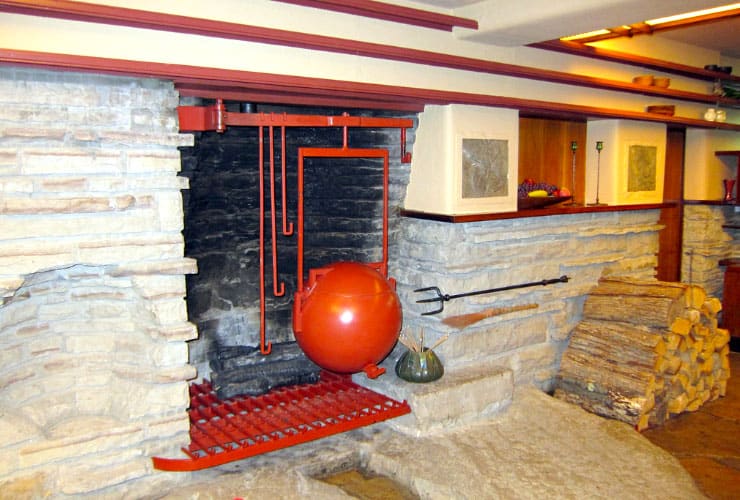
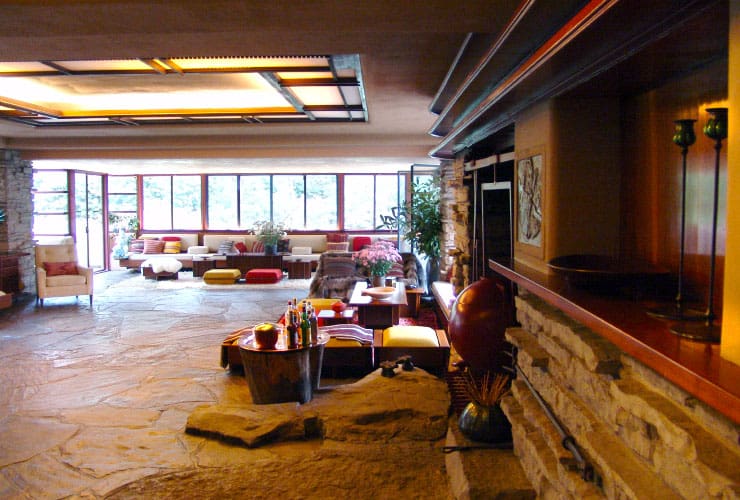
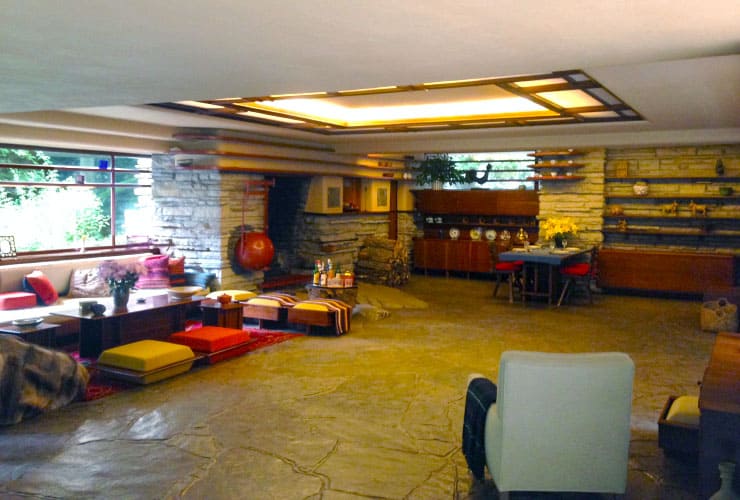

Upon entering Fallingwater, Wright creates an open space that encompasses each the main entry, the dining room and the large living area. This open space is highlighted by the fireplace hearth, with its signature Cherokee-red kettle, long banquettes running adjacent to large windows framed by the same cypress wood prominent throughout the rest of the home. Wright uses open areas and windows to create the illusion of additional space throughout the kitchen and shared areas of the house so it always appears larger than it is in reality. One of things you notice is, no matter where you are in Fallingwater, you can feel, hear and smell the nature all around you at all times. This was deliberately done by Wright per Kaufman’s wishes and is consistent with the conception of organic architecture.
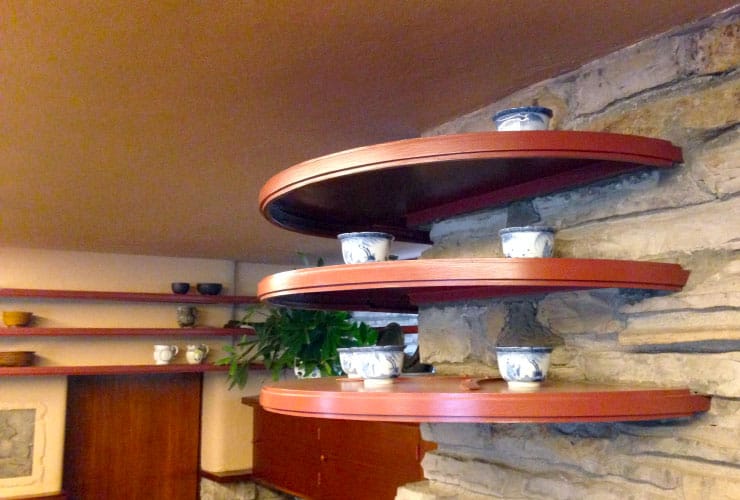
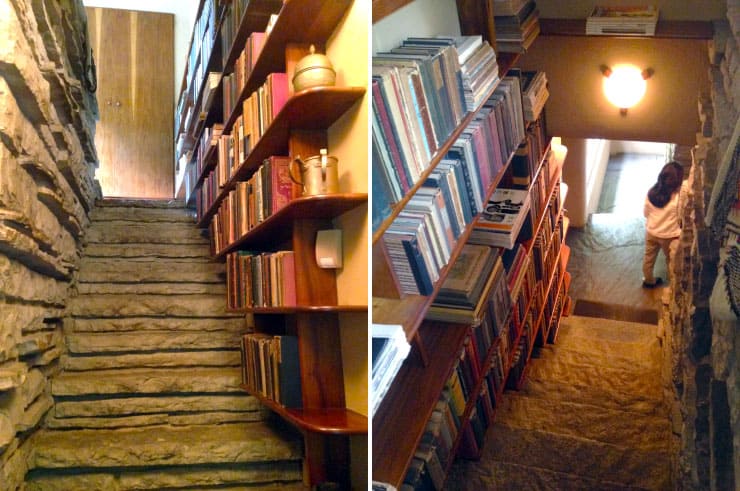
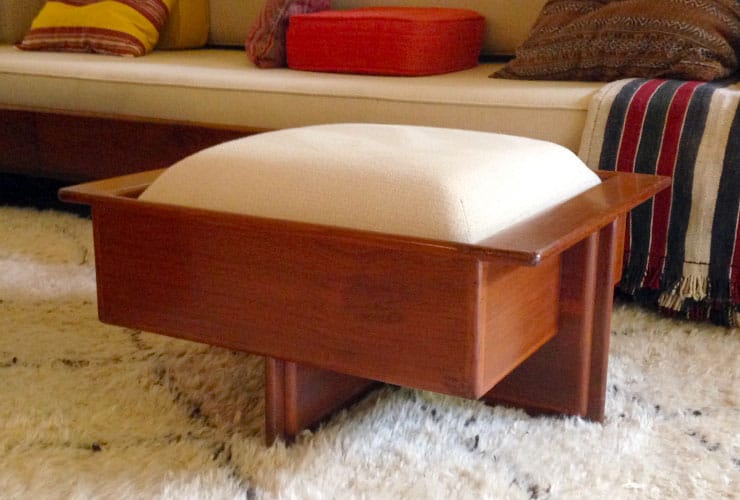

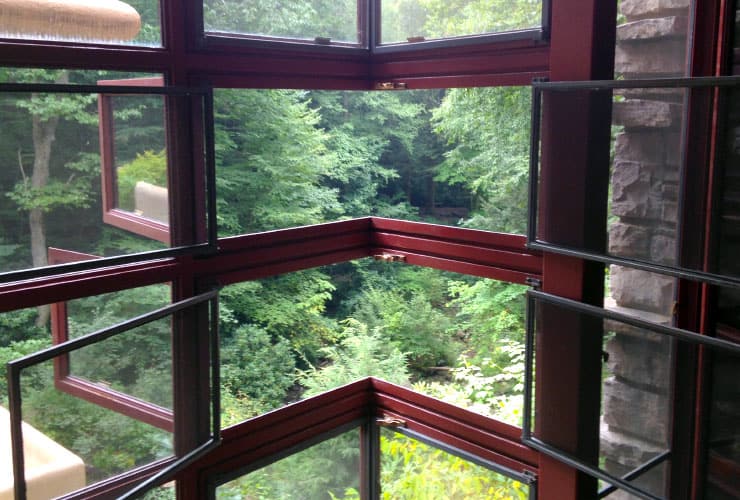
All of the woodwork in Fallingwater is built into the stone walls. The most striking example of this are the bookshelves along the stairs leading from the library to the third floor. All of the furniture, hand rails, shelves, lighting fixtures, window frames, ceilings, etc. were designed by Wright and reflect his love of symmetry and clean lines. Of particular note are the windows, specifically his approach to some of the corner windows. Wright designed some so the outward facing edges had no frames, with glass touching glass, thus producing no visual impediment when looking outside when closed. With others when the windows are open the glass is folded inward which produces the illusion of large open spaces and enhances natural ventilation.
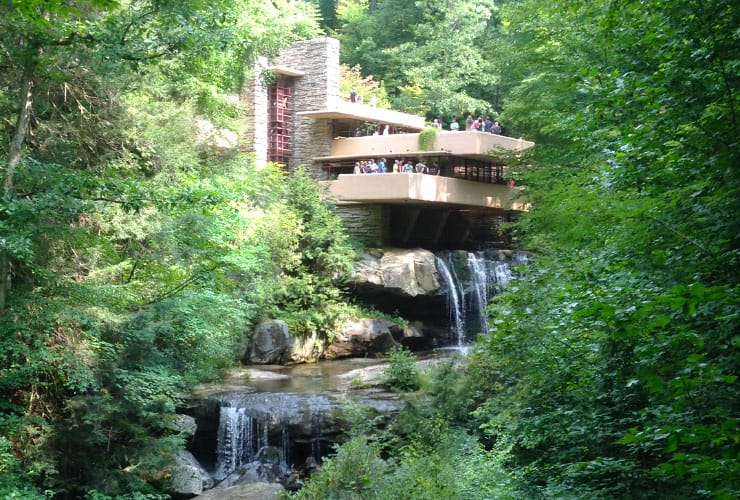
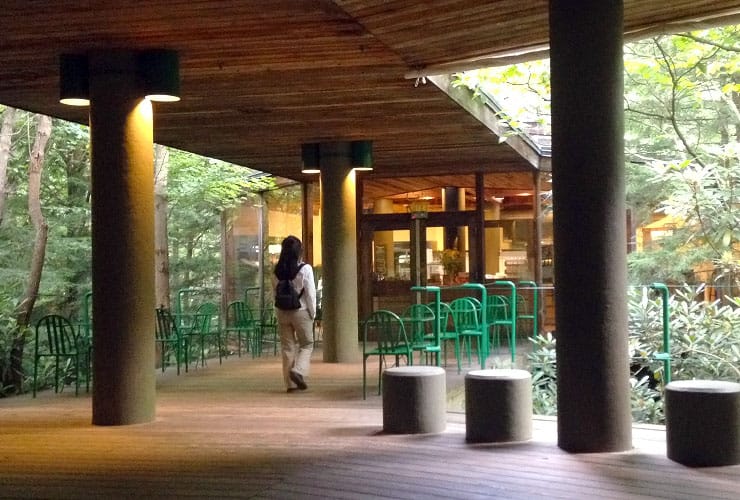
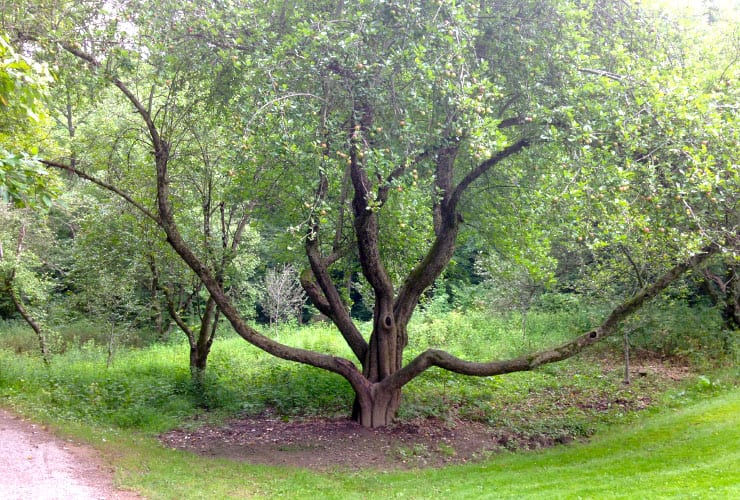
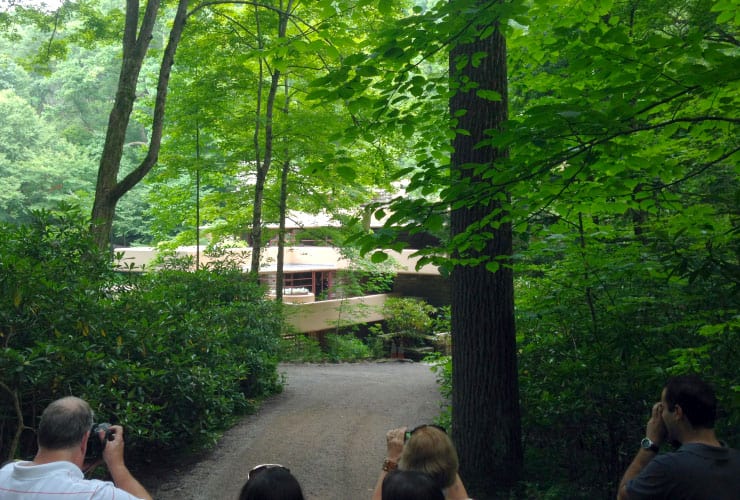
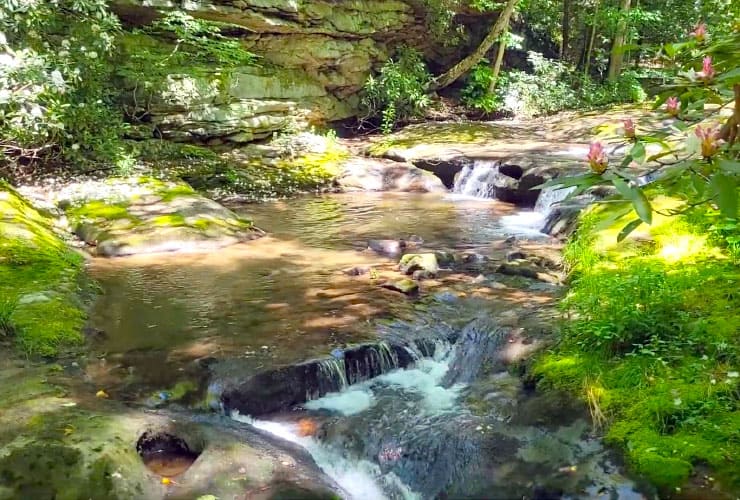
The interior of Fallingwater is beautiful, as well as practical, but it’s the exterior that most are familiar with. The view from the southwest, focused on the cantilevers, the chimney, Bear Run and the falls, is one of the more iconic images of any private home in the world. When you arrive on the grounds there is a visitor center where you arrange your tour (the only way to see Fallingwater) along with a great gift shop. The tour takes you along a set of wooden planks that spill onto a gravel path that passes an apple orchard meadow running parallel with the Bear Run stream. Just before you arrive at a small bridge you get your first glance of the home. There is so much more to explore as well, like the guest house, the parking structure and two different nature trails, the Paradise Overlook and the Lower Bear Run Trail. Both are easy walks and provide great views of the Youghiogheny River Gorge and a soothing stroll along the water, respectfully.
Fallingwater, now an official National Historic Landmark, remained the summer home of the Kaufman’s until 1963 when they donated the home, as well as the surrounding 1,543 acres (624.4 ha), to the Western Pennsylvania Conservancy, which converted it into a museum the following year. It is estimated that no less than 5 million people have visited Fallingwater since its opening to the public in 1964. The home is everything it is reputed to be. If you love architecture or just appreciate beauty, Fallingwater is a visit well worth taking.
Do you have a favorite piece of architecture? We’d love to hear all about it!
I could not remember if you had visited this?njg